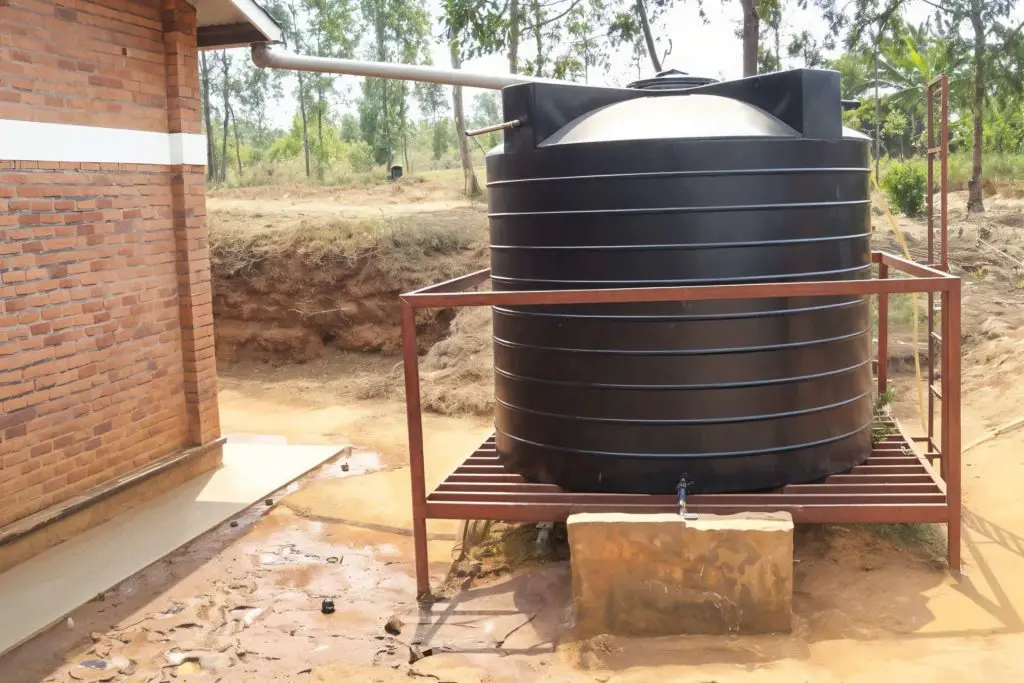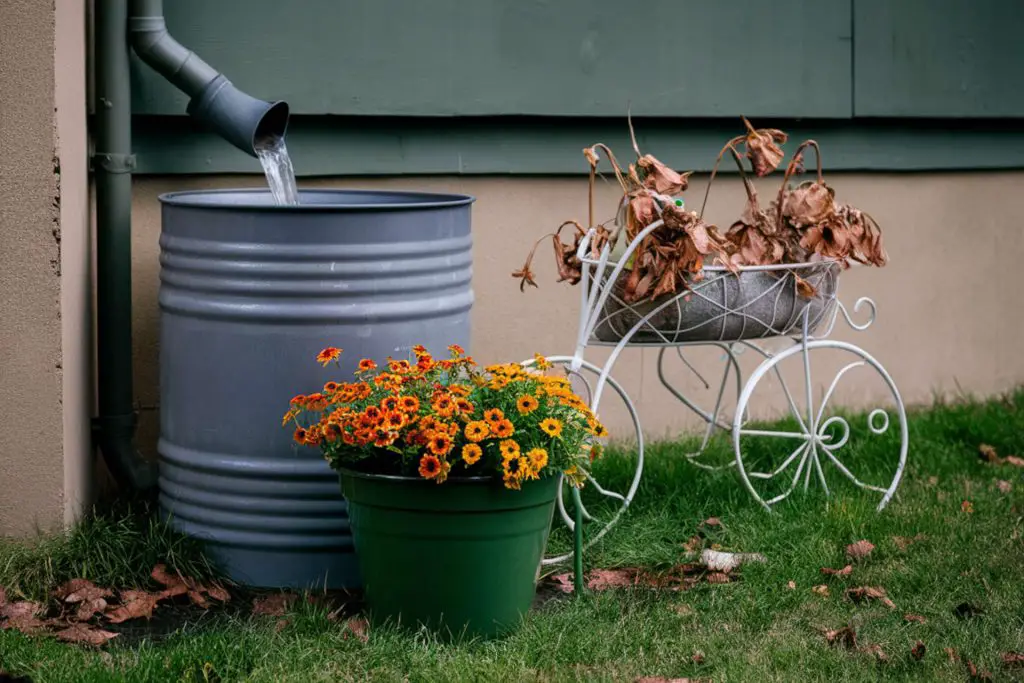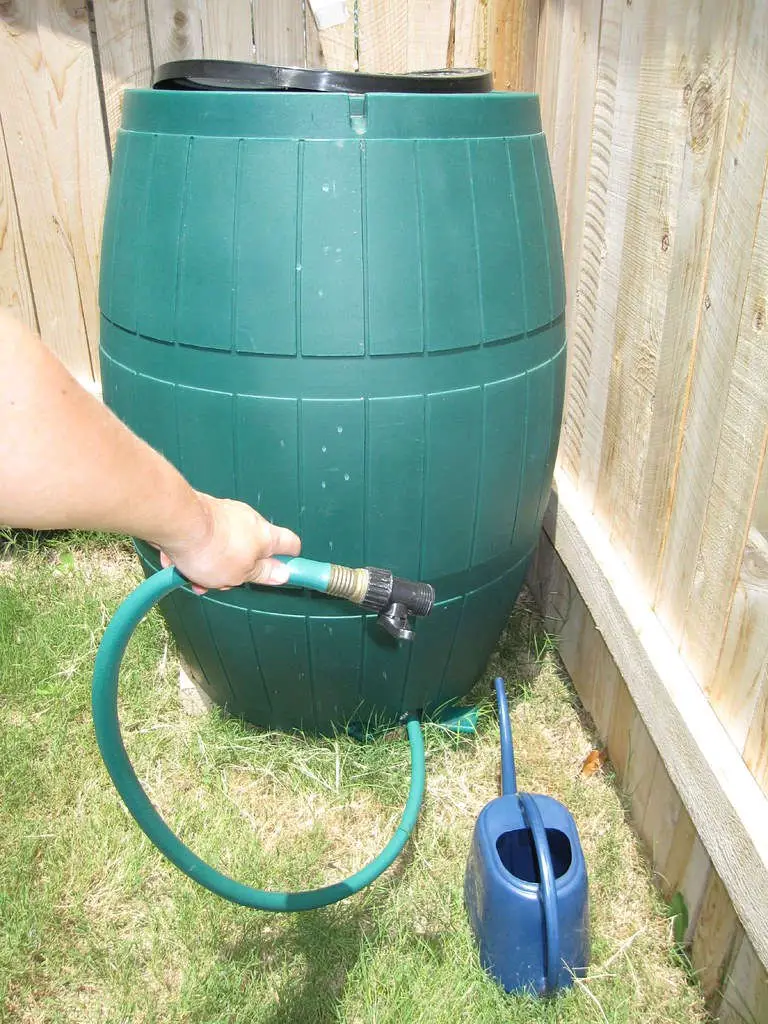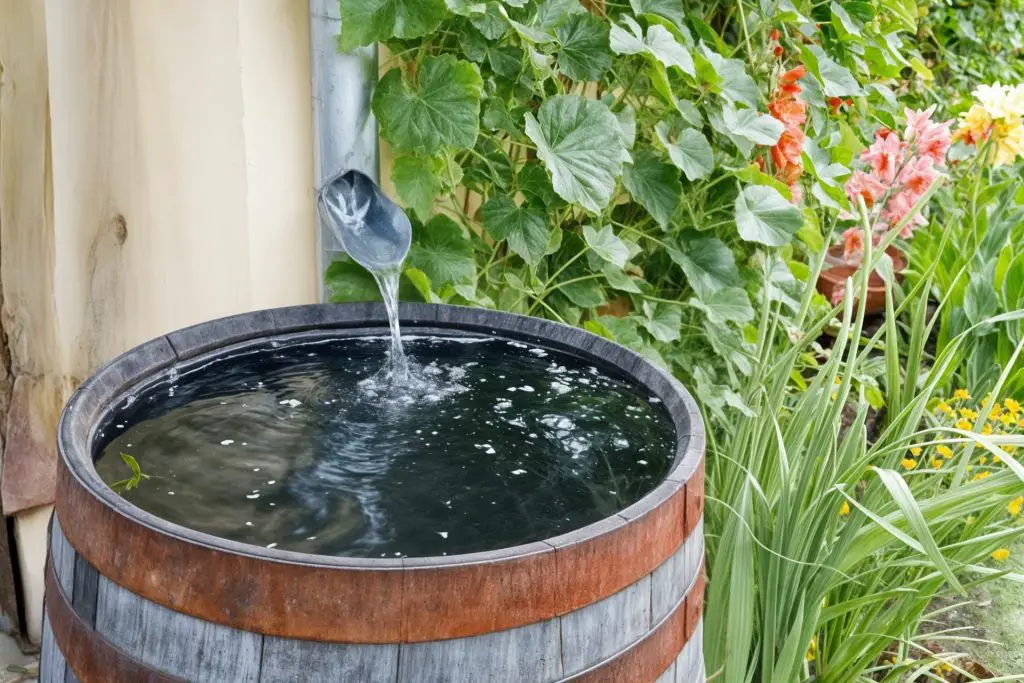Gardeners Looking To Capture and Harvest Rainwater in Backyard
Being able to capture and harvest rainwater in your backyard is becoming more and more popular with gardeners and people who want to help the environment and supplement mains water supplies.
Benefits of the Capture and Harvest Rainwater in Your Backyard

Rainwater harvesting can help reduce your water bills. If you are living off-grid or homesteading then this can be vitally important. It can also help with the management of run-off. Climate change is expected to increase the frequency and severity of heavy precipitation, which could reduce the risk of local floods. This could benefit planning applications.
The roof is typically the primary collection system for rainwater. This is because it is the easiest to install and maintain. Roofs are not as clean as ground-level surfaces so they can be easily removed. Also, they are less likely to become contaminated than ground level.
The water is then collected from the storage vessel and sent to the designated points of use. A secondary header tank is then used to supply the additional gravity-fed water.
The Basics of Capturing and Harvest Rainwater in Your Backyard?

Rainwater harvesting is a simple and relatively inexpensive idea that can have long-reaching positive effects on the environment. If you have a yard free of trees and shrubs and a house with a roof that is mostly free of overhanging trees, you have a great chance of harvesting rainwater for your own use. However, as long as you have a roof, you have the potential to harvest rainwater.
What Are Your Needs?
The first step is planning for the amount of water that you are going to need. Are you building a system for your garden or backyard’s needs, or are you looking to have enough rainwater to meet your household needs as well? If it is the latter you may also have to consider if this will require integration with a well to draw from the water table to supplement supply.
Water Container
Once you have established your needs, the next step involves how you are going to store the rainwater collected. This generally involves choosing a container with enough capacity for water storage.
You have two main choices. The first is to store water in your property. This means setting up a tank. The second option is to store the water in someone else’s property. This means setting up a tank and a system for transporting the water from the roof to the tank.
It is worth noting that you can store water in your property using a tank or you can store water in someone else’s property using a tank. The choice is yours. Of course, the choice will probably depend on where you live, the size of your property, and your budget.
Water Tank
If you want to store water in your property, the most popular option is to use a rainwater tank. You can buy a pre-made tank or you can build your own. There are a few things you need to consider when choosing a tank.
Rainwater Tank Size
The first thing you need to consider is the size of your tank. When choosing the capacity of your tank, you need to consider the following:
- How much water you are likely to need
- The supply of water you will get from a particular storm
The capacity of your tank is determined by the smallest of the above two numbers. For example, if your tank can store 300 liters, and a storm is expected to provide you with 200 liters, you should only fill the tank until it reaches 300 liters. You cannot store more water than the tank can hold.
If you are harvesting rainwater for more than just use in your garden then the capacity of the tank is also determined by the number of people living in your household. For every person in your household, you need to add 100 liters of water.
The following table shows the tank capacity you need based on the number of people in your household.
| Number of People in Household | Tank Capacity (liters) |
|---|---|
| 1 | 100 |
| 2 | 150 |
| 3 | 200 |
| 4 | 250 |
| 5 | 300 |
| 6 | 350 |
| 7 | 400 |
| 8 | 450 |
| 9 | 500 |
| 10 | 550 |
Rainwater Tank Shape
The second thing you need to consider when choosing a tank is the shape of the tank. The most common tank shapes are round and rectangular. Round tanks are usually cheaper than rectangular ones and they also have a smaller footprint. Rectangular tanks are usually more expensive than round ones and they also have a larger footprint.
In addition, another factor to consider is how easy it will be to install the tank.
Rainwater Tank Material

The third thing you need to consider when choosing a tank is the material. There are two main options: plastic and fiberglass. Both plastic and fiberglass tanks have advantages and disadvantages.
The main advantage of using plastic is that it is cheaper than fiberglass. The main advantage of using fiberglass is that it can withstand freezing temperatures.
The main disadvantage of using plastic is that it can crack in freezing temperatures. The main disadvantage of using fiberglass is that it is more expensive than plastic.
The choice of material largely depends on whether you are planning on storing water in your property or someone else’s property. If you are planning on storing water in your property, plastic tanks are a better choice since they can withstand freezing temperatures and they are cheaper. If you are planning on storing water in someone else’s property, fiberglass tanks are a better choice since they can withstand freezing temperatures and they are less likely to crack in freezing temperatures.
Rainwater Tank Capacity
The fourth thing you need to consider when choosing a tank is the tank capacity. The table below shows the capacity of the most popular sizes of rainwater tank.
| Tank Size (gallons) | Capacity (liters) |
|---|---|
| 4,000 | 1,300 |
| 7,000 | 1,900 |
| 9,000 | 2,500 |
| 10,000 | 3,000 |
| 12,000 | 3,600 |
| 14,000 | 4,500 |
| 16,000 | 5,400 |
| 18,000 | 6,000 |
| 20,000 | 6,800 |
| 25,000 | 8,800 |
Rainwater Tank Cost
The fifth factor that you need to consider when choosing a tank is the cost. The table below shows the cost of the most popular sizes of rainwater tank.
| Tank Size (gallons) | Cost (USD) |
|---|---|
| 4,000 | $100 |
| 7,000 | $130 |
| 9,000 | $150 |
| 10,000 | $165 |
| 12,000 | $190 |
| 14,000 | $200 |
| 16,000 | $220 |
| 18,000 | $235 |
| 20,000 | $250 |
| 25,000 | $330 |
Water Tank Location
The next thing you need to consider when choosing a tank is where you are going to store it. You can choose to place the tank on the ground or a platform. For some properties, it is possible to place the tank on a platform.
If you want to place the tank on a platform, you need to consider the following:
- Whether you can build the platform
- How much it will cost you to build the platform
- If you are renting, whether your landlord will allow you to build a platform
- If you are buying your property, whether the building regulations allow you to build a platform
- You should also consider how easy it will be to access the tank to fill it with water.
Water Transport
If you want to store water in someone else’s property, you need to consider a system for transporting the water from your roof to their property.
You can choose between a manual and an automatic system. Amanual systems are cheaper than automatic systems but they are more complicated to operate. An example of a manual system is a bucket system. With a bucket system, water is transported using a bucket. An example of an automatic system is a drip system. With a drip system, water is transported using a drip line.
Legality of Rainwater Collection in US States
Rainwater collection is legal in most US states, with some restrictions in place. Here is a breakdown of the legality of rainwater collection by state:
- Alabama: Recognizes rainwater harvesting as a private property right. Water rights fall under the riparian doctrine, and the Alabama Water Resources Commission has released policy recommendations supporting rainwater harvesting as a water conservation solution.
- Alaska: Rainwater harvesting is legal and used as a primary source of water for many residents. Groundwater harvesting is regulated but can be purchased as a water right.
- Arkansas: Rainwater harvesting is allowed for non-potable purposes if the system is designed by a professional engineer, has appropriate cross-connection safeguards, and complies with the Arkansas Plumbing Code. Senate Bill 1416 grants an income tax credit for rainwater harvesting systems.
- California: There are no regulations preventing the collection of rainwater for outdoor or indoor purposes. However, a permit is required if the collected rainwater is used to create a water supply such as a swimming pool, spa, or fountain.
- Colorado: Rainwater harvesting is restricted. Each household is allowed to collect up to 110 gallons in two rain barrels, and the collected water can only be used for outdoor purposes.
- Connecticut: No restrictions on rainwater harvesting.
- Delaware: No restrictions on rainwater harvesting, and the state sponsors incentive programs encouraging rainwater harvesting.
- Florida: No restrictions on rainwater harvesting, and several local municipalities offer tax incentives and rebate programs.
- Illinois: Rainwater harvesting is regulated. Collected rainwater can only be used for non-potable purposes, and rainwater-harvesting systems must comply with the Illinois Plumbing Code.
- Kansas: Not illegal to harvest rainwater, but a permit may be required if the system is used for a specific purpose.
- Nevada: Restrictions on using rainwater for anything other than wildlife conservation.
- Oregon: While rainwater harvesting is allowed, there are many statutes regulating it, including specifying only rooftop collection.
- Texas: Encourages rainwater harvesting, offering tax incentives and a sales tax exemption on rainwater harvesting systems. The state also requires certain new facilities to incorporate rainwater harvesting systems.
- Utah: Allows rainwater harvesting on land owned or leased by the person responsible for the collection. Systems must be registered with the Utah Division of Water Rights.
- Washington: Allows rooftop rainwater harvesting for domestic use without a water permit, but other applications may require a permit.
- Other States: No restrictions or regulations on rainwater harvesting in most states, with some counties offering incentives for rainwater collection.
Rain Garden

Another option for rainwater harvesting is creating a rain garden. This is not only a wonderful way to ensure that rainwater is being reused properly but also to improve the ecosystem in your backyard.
A rain garden is a planted area that collects and absorbs rainwater runoff. They can be designed in any number of ways, including the traditional U-shaped garden, beds, swales, and depressions.
When creating a rain garden, you need to make sure you select native, low-maintenance plants. Native plants are those that have evolved and grown to survive in an area and will not require a lot of extra attention. Low-maintenance plants are those that will require you to spend little time tending to them.
Choose plants native to your area and look for one that can survive in low light and is drought and heat-tolerant. Here are a few interesting plants you might want to consider when choosing your rain garden plants along with their light and soil requirements, and additional notes on their use:
| Plant Name | Light Requirement | Soil Requirement | Additional Notes |
|---|---|---|---|
| Golden Creeping Jenny | Partial sunlight | Low moisture | Suitable for rain gardens, slopes, and containers |
| Black-eyed Susan | Full sun to partial shade | Almost any soil | Great for rain gardens and containers |
| Blanketflower | Full sun to partial shade | Most soil types | Provides color from late spring to mid-fall, ideal for rain gardens |
| Oriental Poppy | Sun to partial shade | Dry soil | Offers color from midsummer to fall |
| Bahiagrass | Partial shade to full sun | Wet to moist soil | Does not tolerate drought, suitable for rain gardens |
| Big Bluestem | Full sun to partial shade | Dry soil | Does not tolerate drought, suitable for rain gardens |
| Switchgrass | Full sun to partial shade | Moist soil | Grows quickly, prevents soil erosion, ideal for rain gardens |
| Beans | Partial shade to full sun | Most soil types | Suitable for rain gardens, easy to grow |
| Corn | Full sun to partial shade | Most soil types | Suitable for rain gardens, easy to grow |
| Squash | Partial shade to full sun | Most soil types | Suitable for rain gardens, easy to grow |
| Tomatoes | Full sun to partial shade | Most soil types | Suitable for rain gardens, easy to grow |
| Cherry | Partial shade to full sun | Most soil types | Provides fruit and bird habitat, suitable for rain gardens |
| Peach | Partial shade to full sun | Most soil types | Provides fruit and bird habitat, suitable for rain gardens |
| Apple | Full sun to partial shade | Most soil types | Provides fruit and bird habitat, suitable for rain gardens |
You can consider these plants based on your local climate and soil conditions. Local nurseries can offer additional suggestions tailored to your specific area.
Rain Barrel

If you don’t have a rain garden or an area to plant a rain garden, you can still make use of rainwater by installing a rain barrel. A rain barrel is a large water containment barrel that is installed in your backyard. When it rains, the rain barrel will collect the rainwater and allow it to be used for watering your plants or filling your garden hose.
You can purchase a rain barrel in your local home and garden store. If you prefer to make your own, there are numerous plans available online. Rain barrel kits are also widely available, so you can purchase one that’s already been put together. This will eliminate a lot of the work.
If you decide to make your rain barrel, you will need to check your local building codes. This will ensure that you are following proper guidelines so that you can be sure your rain barrel is safe.
Tips for Creating Your Own Rain Barrel
If you are going to use a 55-gallon barrel, you will need a downspout diverter. This will divert the water from your roof into the rain barrel.
When choosing to use a rain barrel, you will need to make your own stand. You can use a bottomless bucket for this. A bottomless bucket is a bucket with a hole in the bottom and a spigot. The stand will need to be sturdy enough to hold the weight of the water. You can use a cement paver and some concrete, or you can use a wooden stand. The stand will need to be at least 24 inches off the ground.
In general, you will need to make a cover for the top of the rain barrel. You will need to use a lid that is at least 1/2 inch thick.
You can use a 2-inch piece of plexiglass for the cover and make a frame for the plexiglass out of a 2-inch PVC pipe. You can then use hinges to hold the top in place. A 1-inch diameter hole will need to be drilled in the bottom for the water to flow out. To this you can add a valve to the hole, but this will require you to cut the barrel.
It is also worth considering adding a garden hose adapter to the hole. This will allow you to connect a garden hose to the barrel. Adding a screen (a mesh) to the bottom of the barrel is also essential as it will prevent leaves and other debris from getting into the barrel.
Finishing Touches
After you have finished your rain barrel, you can paint it. Use a paint that is waterproof and will not leach into the water.
Using Your Rain Barrel

Watering plants with a rain barrel is straightforward. First, fill a watering can from the barrel. Then, pour the water onto your plants. For larger gardens, you may need to refill the watering can a few times to cover all the plants.
The water collected from the downspout diverter can efficiently irrigate your plants and flowers. Additionally, using a watering wand can help reach difficult spots in your garden.
As an alternative, if you connect a pump to the rain barrel you can use a garden hose for watering. Depending on your garden size, a small 1-2 horsepower pump should be more than sufficient for watering purposes.
Pond

One of the best ways to use rainwater is to create a pond. A pond is a wonderful addition to any backyard, especially if you have plenty of space. They are not only beautiful but they can also keep your landscape healthy. A pond is a great way to reduce the amount of storm runoff in your yard. Storm runoff is the excess water from your roof, gutters, and landscape.
When there’s a lot of storm runoff, it can rush into your storm drains and into the local waterways. This can lead to a lot of pollution. A pond will help to reduce the amount of storm runoff that makes its way into your local waterways. This will help to keep your local waterways clean. A pond will also provide a habitat for wildlife.
They can be good places for birds, frogs, and insects. They are also a great place for water plants like lilies and lotus. This is why pond care is so important. You don’t want the pond to become overrun with algae and other unwanted plants. They can quickly become an eyesore. It’s important to keep your pond clean and well maintained. This will help to keep your pond healthy. You can build a pond in a variety of ways.
There are a few different types of ponds to choose from. If you prefer to build a pond in your backyard, you can build a water garden. This is a pond with a variety of water plants like lotus, water lilies, and water grasses. You can also purchase a pre-made pond.
There are many ponds that you can purchase online. Some of these pre-made ponds are self-cleaning. Ponds can also be used to create a water feature. These water features can be simple or they can be quite elaborate. They can also be very ornate. Your garden pond can be anything you want it to be. It can be something that you don’t notice, or it can be something that is the focal point of your landscape.
The only important thing is that you maintain your pond. A pond will help to reduce the amount of storm runoff that you have in your yard. It will also help to provide a habitat for wildlife and an attractive water feature. You can build a pond in a variety of ways.
Final Thoughts
There are considerable advantages in harvesting rainwater in your backyard both environmentally and in terms of the health and sustainability of plants and lawn. It is an effective way to conserve water and reduce stormwater runoff (which often ends up in rivers and lakes, causing erosion and flooding).
Rainwater harvesting systems can be as simple as connecting a rain barrel to your house gutter downspout or as complex as installing a complete rainwater harvesting system that captures, stores, and treats rainwater.
Other backyard projects that will enhance and benefit your yard include backyard lighting, building a fire pit, or even setting up a movie theater.
